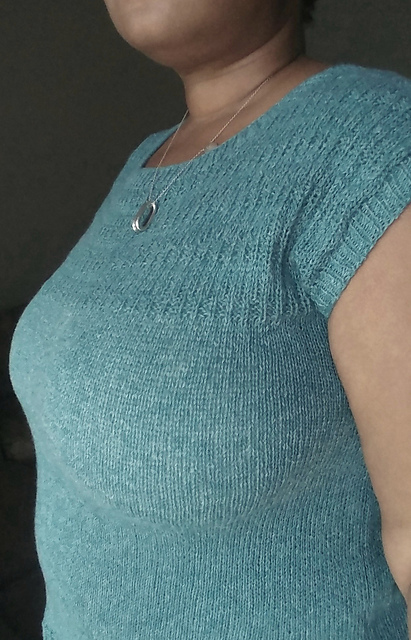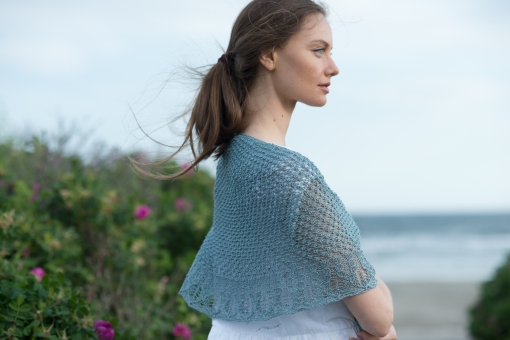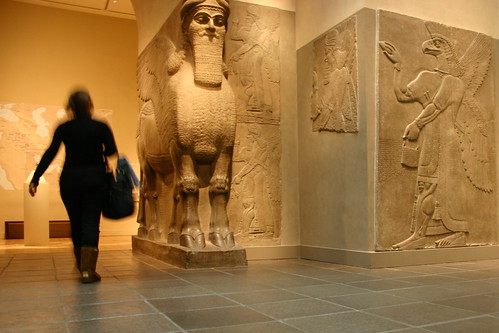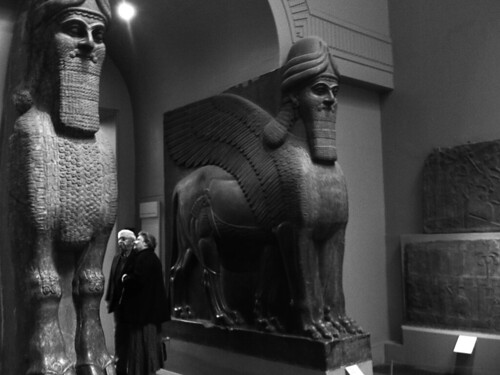What is a Lamassu?
- A winged, human headed bull frequently seen in ancient Mesopotamian (modern Iraq & Syria) myth and art - most frequently as looming sentinels at the gates of major cities.
- My latest shawl design for Quince & Co. yarns
How does one morph into the other? Where that's where the fun of designing comes in!
Back when I was in college, I was a Theatre major and the midst of my Senior year, I decided to swap my English minor for one in Classical Studies, following my increasing interest in the topic. I had an excellent Latin professor (Ortwin Knorr), who got me interested in the subject beyond the language and introduced me to Roman Cookery and the Archaeological Institute of America (of which there are sadly, no Maine chapters).
I had taken a lot of Latin courses, but to complete my minor I took two additional classes: Introduction to the Old Testament/Hebrew Bible and Introduction to Ancient and Medieval Art History.
My textbook for the Art History class is the only one I regret selling back, but it was the Old Testament course that has had one of the longest lasting impacts of any of my school courses. Taught by professor and archaeologist David W. McCreery, this 100-level course was the hardest course I took in my college career. But, as they say, nothing worthwhile is easy.
One day while discussing Noah's flood in Genesis, Professor McCreery mentioned that there was an much earlier, but very similar, version of a Great Flood story that appeared in the Epic of Gilgamesh (c. 2100–2000 BCE). Following class that day, I stayed late to express my interest in the Gilgamesh tale, but as the professor was busy with another student at the time, I merely stated my interest and left conversation for another time. It was to my surprise then, when at the next class session, he handed me one of his personal copies of the tale (Herbert Mason's verse narrative), with the following inscription:
October 2004 Dear Leah There is a lot to learn from this "oldest story ever told." Enjoy! Dave McCreery
I fell in love with the Gilgamesh story, particularly his adventures with the wild-man Enkidu, so much so that I wrote and produced a play about it. It's a story that's stuck with me ever since. So when I was talking to Quince about doing a new shawl design, it was Gilgamesh, and his Mesopotamian brethren that sprung to mind.
As is the way nowadays, I started collecting some images on Pinterest and I kept coming back to two things, the lamassu and king's beards. There was a distinct texture and style of the beards that the more I looked at it, the more knitterly they seemed. A stitch dictionary provided the trinity stitch that mirrored the curly portion of the beard by the mouth, and some time with swatches and graph paper yielded the banded columns and feathery bits I call Gilgamesh's Beard and Lamassu Feathers.
Since Mesopotamia was part of the fertile crescent, a gentle crescent shape for the shawl seemed only natural and of course, when given the option to pick my yarn, I had to go with that ancient near-eastern fiber: linen.
----
And that is a long story behind a fairly simple shawl.
If you'd like to knit one for yourself, the pattern is available now in the shop or you can queue it up on Ravelry.






















